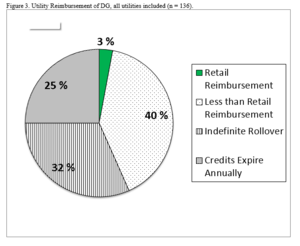J.M.Pearce (talk | contribs) m (→See also) |
J.M.Pearce (talk | contribs) m (→See also) |
||
| Line 25: | Line 25: | ||
* [[The Potential for Grid Defection of Small and Medium Sized Enterprises Using Solar Photovoltaic, Battery and Generator Hybrid Systems]] | * [[The Potential for Grid Defection of Small and Medium Sized Enterprises Using Solar Photovoltaic, Battery and Generator Hybrid Systems]] | ||
* [[Hybrid photovoltaic-trigeneration systems]] | * [[Hybrid photovoltaic-trigeneration systems]] | ||
* [[The energy crises revealed by COVID: Intersections of Indigeneity, inequity, and health]] | |||
* [http://www.renewableenergyworld.com/articles/2017/01/new-utility-program-helps-customers-go-off-grid.html Vermont Utility helping customers leave the grid for fixed monthly fee] | * [http://www.renewableenergyworld.com/articles/2017/01/new-utility-program-helps-customers-go-off-grid.html Vermont Utility helping customers leave the grid for fixed monthly fee] | ||
Revision as of 12:36, 7 July 2020

Source
- Chelsea Schelly, Edward P. Louie, Joshua M. Pearce. Examining interconnection and net metering policy for distributed generation in the United States. Renewable Energy Focus 22–23, (2017), pp. 10–19. https://doi.org/10.1016/j.ref.2017.09.002 free open access
Abstract
Following requirements of the Energy Policy Act of 2005, most U.S. states require utility companies to adopt interconnection and net metering policies, allowing customers to become prosumers who both consume and produce electricity, generating electricity using distributed renewable energy technologies, connecting to the existing electric utility grid and receiving compensation for excess electricity generation. This paper reviews existing interconnection and net metering policies instituted by investor owned utilities (IOUs) across the U.S., specifically focused on policies regulating installations of small scale, residential or Tier 1 (a term used to indicate policies applicable to smaller scale rather than larger scale, although the size at which DG systems are classified as either Tier 1 or higher tiers varies by utility). Publicly available data from each IOU reveal inconsistencies in interconnection and net metering policies, within states and even within individual companies. In addition, accurate information is often unavailable to consumers. Perhaps most importantly, results suggest that compensation for excess distributed generation often lacks transparent articulation in utility policy. The results of this study provide important insight into interconnection and net metering policies for distributed renewable energy generation, as states and utilities continue to modify interconnection and net metering policies in response to increased adoption of distributed renewable energy systems.
Highlights
- Examines interconnection and net metering compensation for investor owned utilities in the United States.
- Analysis reveals inconsistencies across utilities, even those operating in states with statewide net metering policies.
- Analysis reveals most investor owned utilities do not in practice provide retail compensation for excess generation, even when advertised.
Keywords
Energy policy; Electric utility; Photovoltaic; Distributed generation; off-grid; Solar energy
See also
- Energy Policy for Energy Sovereignty: Can policy tools enhance energy sovereignty?
- Policies to Overcome Barriers for Renewable Energy Distributed Generation: A Case Study of Utility Structure and Regulatory Regimes in Michigan
- Levelized cost of electricity for solar photovoltaic, battery and cogen hybrid systems
- Performance of U.S. hybrid distributed energy systems: Solar photovoltaic, battery and combined heat and power
- Review of solar levelized cost
- Emerging economic viability of grid defection in a northern climate using solar hybrid systems
- The Potential for Grid Defection of Small and Medium Sized Enterprises Using Solar Photovoltaic, Battery and Generator Hybrid Systems
- Hybrid photovoltaic-trigeneration systems
- The energy crises revealed by COVID: Intersections of Indigeneity, inequity, and health
In the News
- Yes, Your Electric Car Can Charge On Sunshine - Insideevs (37830)





